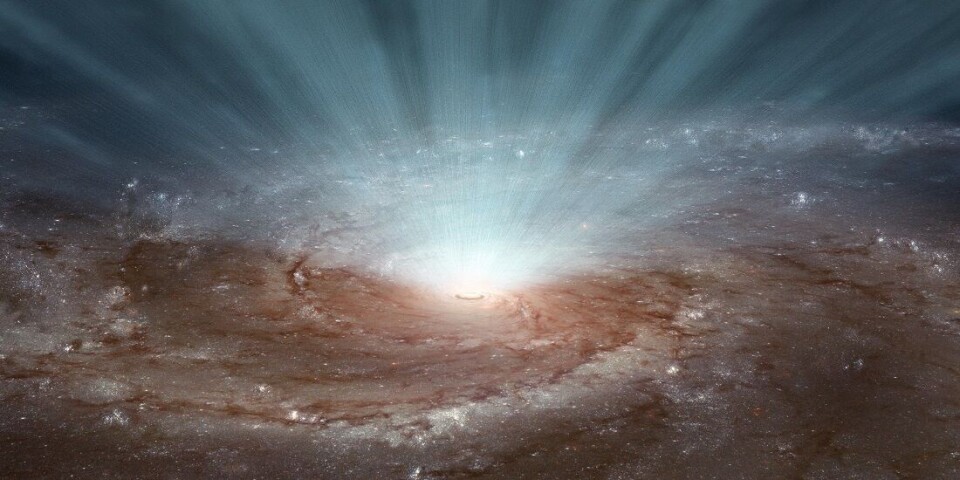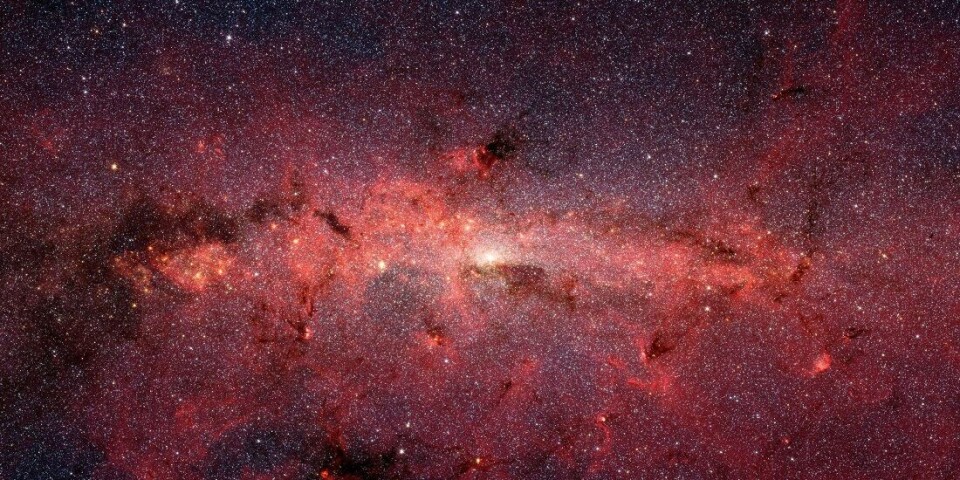THIS CONTENT IS BROUGHT TO YOU BY NTNU Norwegian University of Science and Technology - read more
Where does the mysterious radiation come from?
Cosmic rays occasionally contain enormous amounts of energy. But we have no idea why or where this radiation comes from. Or maybe we do now?

Researchers at NTNU may have found the answer to one of the big, unanswered questions in physics.
The universe is full of different types of radiation and particles that can be observed here on Earth. This includes photons across the entire range of the electromagnetic spectrum, from the lowest radio frequencies all the way to the highest-energy gamma rays. It also includes other particles such as neutrinos and cosmic rays, which race through the universe at close to the speed of light.
Occasionally, cosmic rays have much higher energy than usual. We’ve known about this since 1962, but we still have no idea why.
We also don’t know where this ultra-high-energy cosmic radiation comes from. Or do we?
Supermassive black holes may be the cause
Foteini Oikonomou, an associate professor at NTNU's Department of Physics, is working on the case. In a recent article, she and her colleagues present a completely new and plausible explanation.
Domenik Ehlert is a researcher at the same department. The research team also includes Enrico Peretti from the Université Paris Cité. Their work focuses on astroparticle physics, which studies the relationship between the smallest particles in the universe and the universe’s largest phenomena.
“We suspect that this high-energy radiation is created by winds from supermassive black holes,” says Oikonomou.
But what on earth does that mean?
Active black holes create winds
The Milky Way is the neighbourhood in the universe where you and I live. Our sun and solar system are part of this galaxy, along with at least 100 billion other stars.
“There's a black hole called Sagittarius-A* located right in the centre of the Milky Way. This black hole is currently in a quiet phase where it isn’t consuming any stars, as there is not enough matter in the vicinity,” says Peretti.

This contrasts with growing, supermassive, active black holes that consume up to several times the mass of our own sun each year.
“A tiny portion of the material can be pushed away by the force of the black hole before it's pulled in. As a result, around half of these supermassive black holes create winds that move through the universe at up to half the speed of light,” says Peretti.
We have known about these gigantic winds for approximately ten years. The winds from these black holes can affect galaxies. By blowing away gases, for example, they can prevent new stars from forming. This is dramatic enough in itself, but Oikonomou and her colleagues looked at something else, much smaller, that these winds might be responsible for.
“It's possible that these powerful winds accelerate the particles that create the ultra-high-energy radiation,” says Ehlert.
To understand this, we also need to explain a little bit about atoms.
Atoms and enormous amounts of energy
Atoms consist of a nucleus, which is made up of protons and neutrons. These particles are made up of quarks – but we do not need to go into that right now.
One or more electrons can be found around this nucleus in a cloud.
“The ultra-high-energy radiation consists of protons or atomic nuclei with energy up to 1020 electronvolts,” says Oikonomou.
If that number doesn’t mean anything to you, you should know that in this context, it is an absolutely enormous amount of energy.

“A particle like this, which is smaller than an atom, contains about as much energy as a tennis ball when Serena Williams serves it at 200 kilometres per hour,” says Oikonomou.
That corresponds to roughly a billion times more energy than the particles created by researchers in the Large Hadron Collider in Switzerland and France.
Fortunately, these cosmic rays are destroyed by the Earth’s atmosphere. By the time they reach ground level, they are as harmless as all the other cosmic radiation that reaches us at the Earth’s surface.
“But for astronauts, cosmic radiation is a very serious problem,” says Oikonomou.
Airline crews do not need to worry about this because they do not fly high enough.
“The main concern for astronauts is cosmic low-energy radiation produced by our own sun, because it's much more common. The rays we study are infrequent enough that it's extremely unlikely they would pass through an astronaut,” she explains.
Other suspects
Previously, researchers have looked into whether these high-energy particles come from gamma-ray bursts, from galaxies that produce new stars at an extremely high rate, or from plasma outflows from supermassive black holes.
But Oikonomou and her colleagues have another hypothesis.
“All the other hypotheses are very good guesses – they're all sources that contain a lot of energy. But no one has provided evidence that any of them are the source. That's why we decided to investigate the winds from the supermassive black holes,” says Ehlert.

Guilty? Maybe
So what do we actually know? Is it the winds that create the high-energy particles in cosmic radiation?
“Our answer is more of a cautious ‘maybe’,” says Oikonomou, adding:
“We find that the conditions related to these winds align particularly well with particle acceleration. But we're still unable to prove that it's specifically these winds that accelerate the particles behind the high-energy cosmic radiation.”
However, the model the researchers are using can explain one specific aspect of these particles that we still do not understand. Within a certain energy range, the particles have a chemical composition that other models cannot explain in any meaningful way.
“We can also test the model using neutrino experiments,” says Oikonomou.
She explains that in the coming years, they hope to collaborate with neutrino astronomers to test their hypothesis.
Perhaps they will then find more evidence, one way or the other.
Reference:
Ehlert et al. Ultra-high-energy cosmic rays from ultra-fast outflows of active galactic nuclei, Monthly Notices of the Royal Astronomical Society, vol. 539, 2025. DOI: 10.1093/mnras/staf457
———
Read the Norwegian version of this article on forskning.no
More content from NTNU:
-
Can we tap the ocean’s power to capture carbon?
-
Researchers have uncovered major problems in Norway's salmon industry
-
Why ChatGPT is bad at imitating people
-
Outer space has a trash problem, according to researchers
-
These researchers want quantum computers that work properly
-
If you can hear your neighbour snoring, there’s something wrong with the building you live in





































